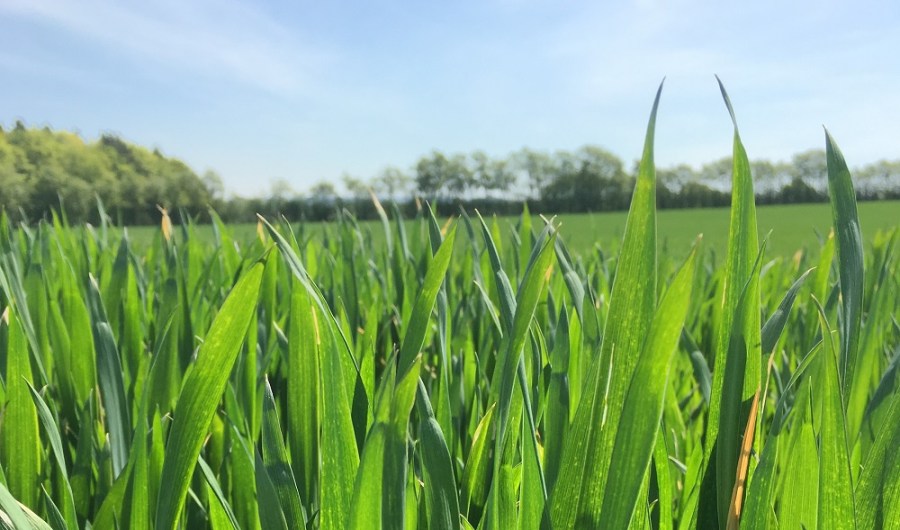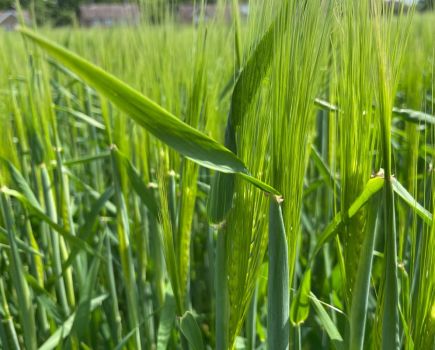Biostimulants are a buzz word on farms at the moment, with proven benefits in terms of both crop health and performance. But after a recent spell of rain across the country has temporarily alleviated concerns over crop stress, are they still worth applying to crops? CPM takes a look at the latest advice around application and what growers and agronomists have to say about the products.
By Charlotte Cunningham
With the welcome return of rain to many areas of the country, both crops and growers will be feeling some light relief after concerns that we were about to see a repeat of the 2018 drought.
However, while crops are arguably less parched and subsequently less stressed, it’s likely that growers will experience another dry spell before harvest, which will undoubtedly put crops through drought stress at the critical yield building stage.
Biostimulants offer a chance for growers to give additional protection against such stress periods, so are they worth applying now?
Enhanced nutrient uptake
After the warm and dry start to the year, growth of many winter crops got ahead of normal but slowed in April as the dry weather stalled nutrient availability, explains Stuart Sutherland, technical manager at Interagro. “The recent rain will have kick-started uptake, which can be further enhanced with Bridgeway or Zonda. It contains high levels of L-Glutamic Acid and L-Glycine which are highly effective chelating agents. When applied together with micronutrients, Bridgeway and Zonda increase absorption through plant roots and aid transportation inside the plant.”

Keith Challen, director at Belvoir Farms, has seen these benefits first-hand after experimenting with both Zonda and Bridgeway over the past three years.
Keith Challen, director at Belvoir Farms, has seen these benefits first-hand after experimenting with both Zonda and Bridgeway over the past three years. “Last year we used 1 l/ha across two applications which provided us with a 0.97t/ha uplift in wheat yield over the controlled plots. This equated to roughly £135 margin over cost – there aren’t that many things which will give you that level of return,” he says.
“What makes last year’s uplift even more impressive is how well the crop performed despite the prolonged dry period. We put this purely down to the use of Bridgeway. It has proven to protect crops, particularly through stress periods such as drought, and so far we are seeing a similar pattern this year.”
Metabolic activity
As well as aiding nutrient uptake, biostimulants have a proven effect on increasing metabolic activity. “Plants synthesise the glucose energy source they need through photosynthesis – the powerhouse of all metabolic processes within the plant,” explains Stuart. “A low rate of photosynthesis will result in plants that are slow growing, impacting potential. Conversely, a plant which is fast growing will be photosynthesising more efficiently with a higher potential.”
Photosynthesis is reliant on chlorophyll for the absorption of light energy, and amino acids L-Glycine and L-Glutamic Acid are fundamental metabolites in the production of chlorophyll, he adds. “Feeding crops Bridgeway or Zonda increases chlorophyll concentration in plants, leading to greener crops and higher rates of photosynthesis.”
Agrii agronomist Ed Scaman has seen similar results in crops around the Inverness area. “Anecdotally, we heard last year that crops which had received an application of Zonda had greener, bolder leaves that didn’t tend to curl up as much – despite the prolonged dry spell.”
Improved growth rates
Structure, root biomass and growth rates could also benefit from a biostimulant, adds Stuart. “Whether you’re growing wheat, potatoes, sugar beet or even vegetables, crops fundamentally need to build structure and root biomass to prepare the foundations for the production of food.
“Amino acids are the building blocks of proteins and critical to the integrity of the plant. Plants supplemented with Bridgeway or Zonda will be more resilient to competition with an increased ability to access water, macro and micronutrients critical for healthy growth and development.”
The amino acids in Bridgeway and Zonda are also important activators of phytohormones and growth, and are crucial for pollination and fruit formation, he adds.
Neil Cairns, crop production manager for vegetable grower Barfoots of Botley, has been using Interagro’s Bridgeway on organic and conventional crops for the past three years. “Initially we used it on organic tenderstem broccoli and courgettes, and have since extended it to those two crops in conventional systems plus pumpkins and a little sweetcorn.”
According to Neil, crops treated with Bridgeway have become noticeably brighter and more vibrant, with heavier yields. “Our own company trials in the first year recorded a 25% yield improvement in organic tenderstem broccoli treated with Bridgeway, and in 2018 I would estimate a 10-25% average yield lift across all the treated crops – these are substantial improvements.
“The product keeps the crop greener for longer and allows it to make maximum use of the nutrition available – especially micronutrients – which is obviously important for organic crops. But without a doubt, it is effective on conventional crops too.”
As focus now turns to T2 applications in cereal crops, it’s clear that there are still a number of benefits available to growers – despite the recent rainfall. “Bridgeway or Zonda in cereal crops at T2 can improve nutrient uptake, stress tolerance, plant growth and yield,” says Stuart. “While we may be in the clear for the time being, application made ahead of a stress period will help to optimise the crop’s host defences and is definitely worth considering this season.”
For more information on Bridgeway/Zonda or for further details on what farmers have to say about the products, visit: https://www.interagro.co.uk/case-studies/




